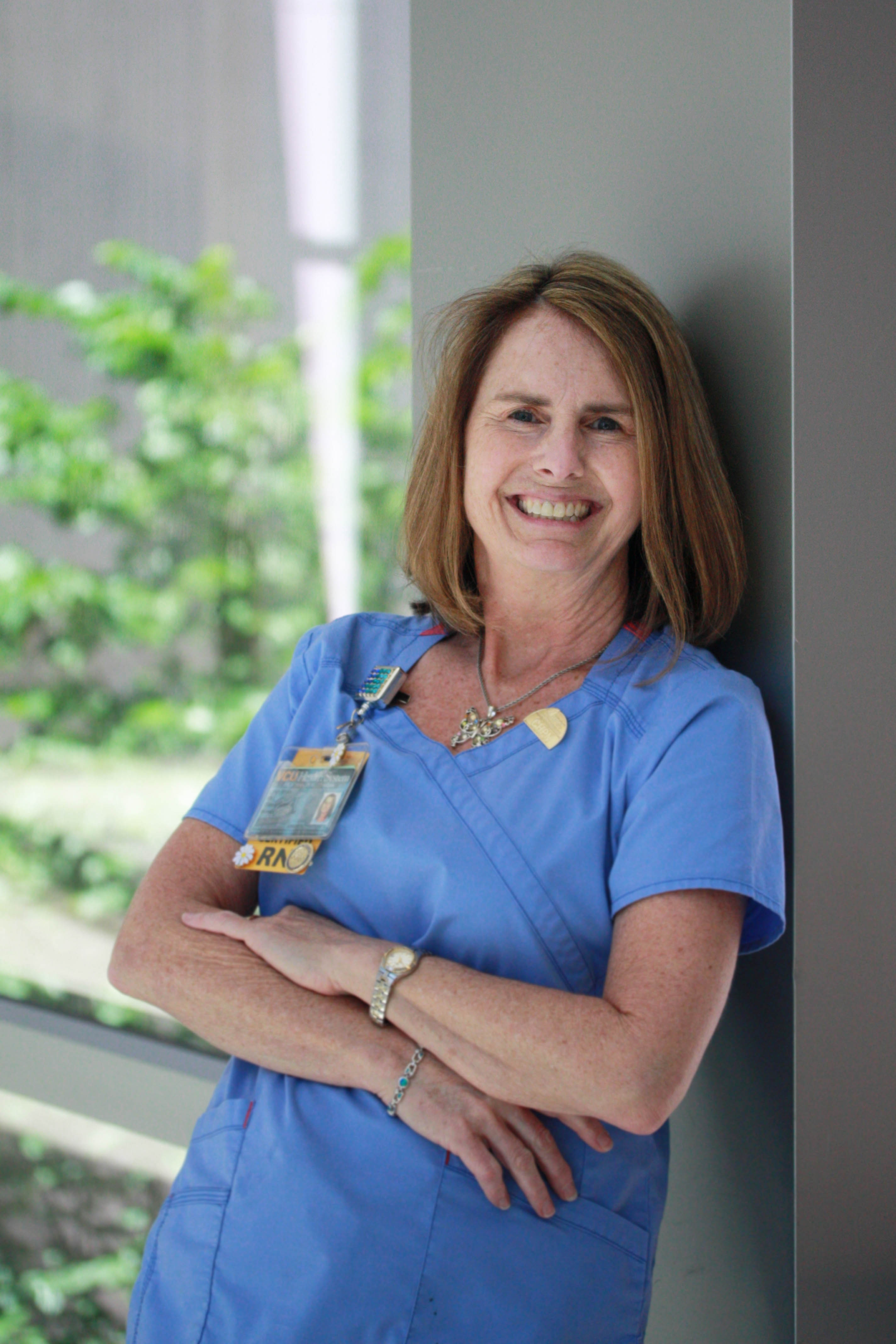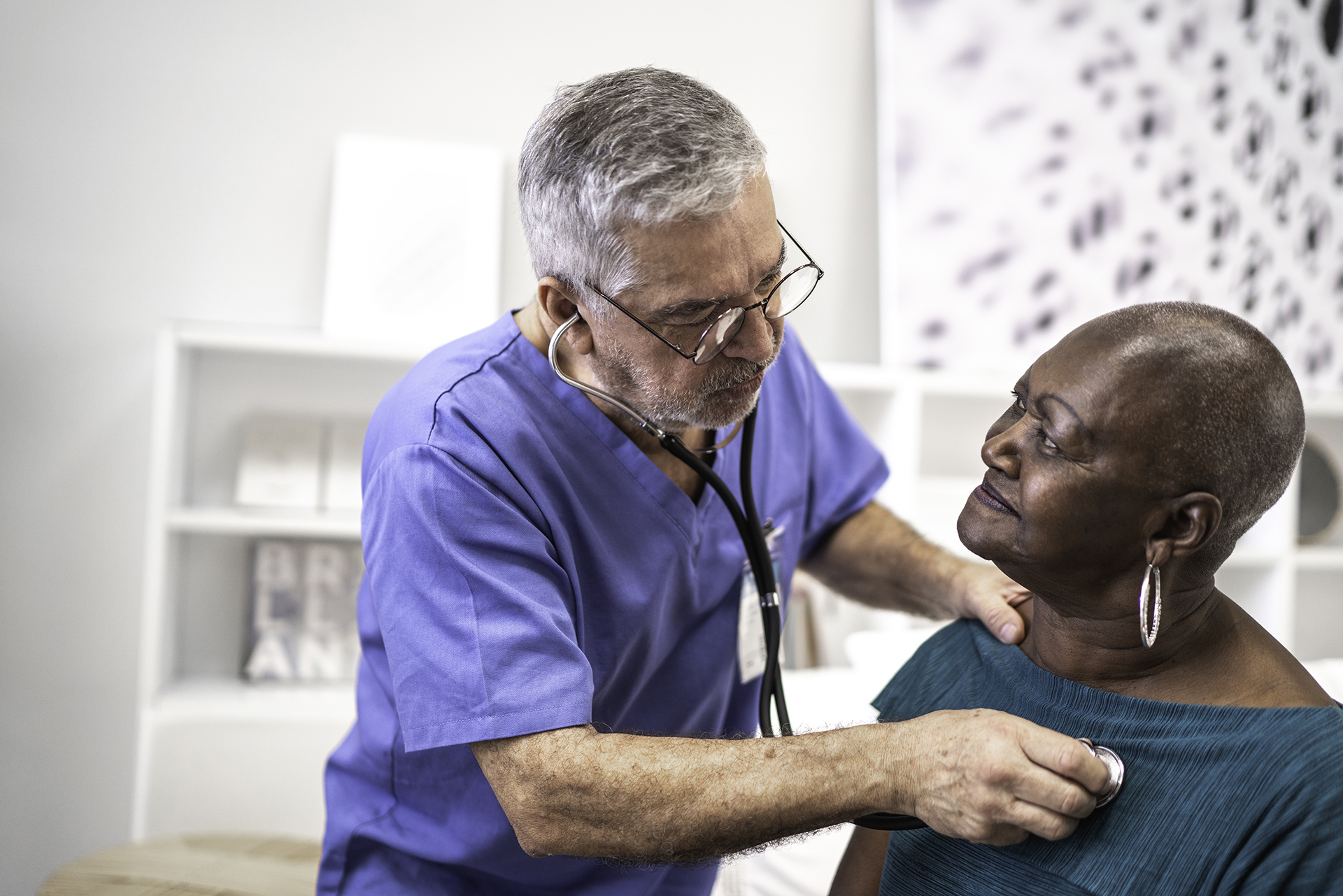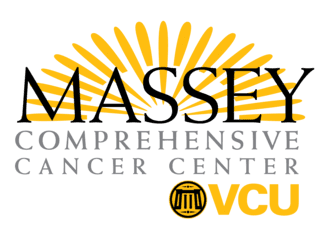Latest News
Research, Center News & Funding
Ten years later Still one in a million
Jun 22, 2016

In March of 2003, I was having pain in my right upper chest that initially occurred only when I laughed. Eventually the pain continued to worsen, so I made an appointment with my primary care physician. After many tests and procedures, fluid-filled sacks were found on my liver. The following week, I was scheduled for a liver biopsy.
I woke up from that biopsy and my life had been changed forever.
When I opened my eyes after the surgery, the first thing I saw was the clock. What was scheduled to be a 45-minute procedure had taken four hours. I turned to my husband who was standing beside my bed and asked, “Where have I been for five hours?” I saw tears running down his face. The surgeon was also in the room, and he began to explain what happened.
“When we started the biopsy, the fluid-filled sacks were actually a type of mucin (a jelly-like substance) and not attached to your liver; they were attached to your diaphragm. We also found the mucin around your ovaries and had to remove them. Your appendix had calcified, then ruptured. It appears that the appendix was the source of the mucin.”
I asked if the mucin was a result of a cancerous growth and he confirmed. He called it Pseudomyxoma peritoneii (PMP) and told me that it is very rare. In fact, he had never seen it before and so had requested a consult from a gynecological oncologist during the surgery. What he said next was when I realized the severity of my condition: “It is fatal, but not necessarily terminal.”
That is when my life with cancer began. I am a mother of three children, and all I could think about was whether or not I would be able to raise them.
The surgeon referred me to a surgical oncologist he knew at VCU Massey Cancer Center. He told me that he was sending me to the chair of surgery at VCU (at the time), who was also known as “The Guru of the Strange and Unusual.” I knew I must be in trouble.
The first time I met Dr. James Neifeld was in October of 2003. I expected a pompous doctor who would take charge and tell me my plan of care without allowing me any input. But Dr. Neifeld was far from my expectations. He came very quietly into the exam room and waited for us to speak first.
My husband and I had a notebook full of questions based on what little information we could gather about PMP. Once he heard our concerns, Dr. Neifeld explained the plan of care he thought would be best, and suggested that surgery be the first step to remove the mucin. He informed me that this type of cancer did not respond to chemotherapy and that surgery would be the best outcome. He then told me that I was one in a million.

PMP is a clinical condition caused by cancerous cells (mucinous adenocarcinoma) that produce abundant mucin. Appendiceal primary cancer most commonly causes this disease, and if untreated, PMP is lethal. It causes fibrosis of tissues and impediment of organ function by filling the abdominal cavity with mucinous tumors. Death is often caused by cachexia, bowel obstruction and/or other complications.
That month, I proceeded with abdominal surgery. The mucin was scattered throughout my abdomen and on the surface of major organs. The peritoneal lining (a thin layer of tissue lining the abdomen), the omentum (a fold of peritoneum connecting the stomach with other abdominal organs) and a foot of the large intestine were removed. Recovery took over a year.
Every six months after surgery, I had a follow-up CT scan. There was no evidence of disease for three years. At three years exactly, when I felt confident this was all behind me, Dr. Neifeld found new evidence of a tumor, and again, the best treatment was surgery.
In March 2006, I had a second debulking surgery, which resulted in removing the uterus and re-stripping the peritoneal lining. I recovered much faster this time.
I continued to see Dr. Neifeld every 6 months for follow-up. Anytime I felt anxious with a feeling that something was off, he would ask me to come see him, where he would provide the same quiet, gentle compassion that I received the very first time we met. He gave me the reassurance I needed to continue to live my life and not live the life of cancer. Once you see the same physician every few months, a friendship grows. Now when I complain too much, Dr. Neifeld gives his favorite response: “It beats the alternative!”
In 2014, after working for a hospice company for six years, I started thinking about a job change. Dr. Neifeld suggested that I apply as a nurse in Massey’s Dalton Oncology Clinic. “Won’t that be weird?” I asked. He replied, “No, why would it be? I know you and I know the passion you have in your work. We need passionate nurses in Dalton.” Then he said, “Besides, I have other patients who work with me, and it’s nice to see our patients thriving.” I then accepted a job in Dalton.
Dalton nurses have the opportunity to work with many providers and every day is different. I began working with the surgical oncologists, medical oncologists and in the pain management clinic. I was most passionate about working in the Supportive Care Clinic with the palliative care team.
While working in the clinics with Dr. Neifeld, my admiration for him only grew stronger. His mannerisms, calmness and patience benefit so many of his patients. Many have been seeing him for ten or more years, and he keeps up with each life event, listening and recognizing each of their achievements, such as new jobs, marriages and grandchildren.
As a Dalton nurse, I have been able to truly empathize with patients diagnosed with cancer. I had a patient recently tell me, “You have no idea what I am going through.” But I was able to say, “Yes I do. I have been in the same chair you are in right now, and here I am.” I remind patients that Massey is the best place to be for cancer treatment. For me, being diagnosed with a rare cancer has enabled me to become a better nurse.
This year, I am ten years out from my last surgery and ten years from any cancerous tumors.
When I was first diagnosed in 2003, only a few had reached the five-year life expectancy mark after a PMP diagnosis. And a 10-year survival rate? At the time there was no data at all. Today, I continue to be one in a million and I have the privilege to work with the people who continue to care for me in the exact same place that I get to care for others. This has allowed me more grace to care for cancer patients. I can say, “You can do this. I have been there.”
Dr. Neifeld and I have a running joke that he cannot retire until I am completely cured from cancer. Today I learned that he plans to retire at the end of the month. Now, after 10 years cancer-free, chances are pretty good that I am completely cured. So, as a patient and a friend, I guess I will let him retire.
Lynn Ryan, RN, BSN, CHPC
May 24, 2016
Related News
Research, Center News & Funding
Through a $13M NCI grant, a team of Massey scientists could change the way liver cancer is treatedOct 18, 2024
Community Engagement & Health Equity, Center News & Funding, Massey 50
50th anniversary of Massey has personal meaning for advisory board member Regina H. BooneOct 14, 2024

Get access to new, innovative care
Treatments in clinical trials may be more effective or have fewer side effects than the treatments that are currently available. With more than 200 studies for multiple types of cancers and cancer prevention, Massey supports a wide array of clinical trials.

Find a provider
Massey supports hundreds of top cancer specialists serving the needs of our patients. Massey’s medical team provides a wealth of expertise in cancer diagnosis, treatment, prevention and symptom management.
